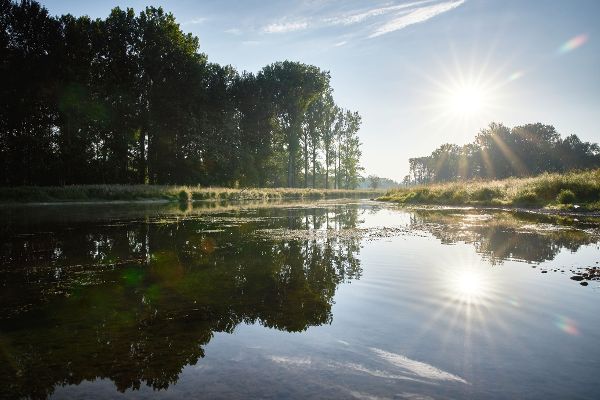Overview of subsidisation of aquatic ecology

In order to achieve a good ecological status of Austria’s running waters, measures to reduce hydro-morphological pressures on running waters can be subsidised. In addition to research funding, there are two areas of funding - for municipal funding applicants and for enterprises.
Straightened stretches of running waters, fortified banks, dams, the lack of continuity for fish migration (i.e. the passability for fish), and bedload transport are among the most common pressures on our water bodies. Currently, around 60 % of our watercourse stretches do not show a good ecological status or a good ecological potential. In Austria, deficits relate primarily to the hydro-morphology, which means to the continuity of running waters, the structure of water bodies and the run-off conditions.
The high percentage of ecologically impaired water sections is on the one hand due to the intensive utilisation of Austrian waters for energy generation and on the other hand is a result of the interventions required for flood control. Primarily in the larger running waters inhabited by migratory fish, fish populations have declined significantly in recent decades, with the result that in many sections of Danube, Inn and Drava numerous and essential typical species are missing.
Intact running waters provide a sustainable habitat for a large number of animals and plants and thus make an important contribution to biodiversity and climate change adaptation. They also attract people for many activities, such as hiking, cycling, running or simply enjoying nature by the water. Due to the importance of living river landscapes and in order to achieve the objectives of the EU Water Framework Directive, the Ministry promotes measures to improve the ecological status of running waters on the basis of the Environmental Support Act (“Umweltförderungsgesetz”, abbr. UFG). A total of 340 million euros in funding is available for the years 2008 to 2027.
The European Water Framework Directive, or EU WFD for short, aims to promote a coherent and integrated water policy in the Member States. Its main objective is to bring all surface waters and groundwater bodies to a good ecological status or good ecological potential by 2027 at the latest. This is achieved by defining environmental objectives, action plans and monitoring measures to ensure water protection.
You can find more information here: The EU Water Framework Directive
Which measures are eligible for funding?
The following measures are eligible for funding:
- Measures to improve continuity
- Measures to restructure morphologically altered stretches of running waters
- Measures to reduce the effects of run-offs
- Measures to reduce the effects of backwater
- Measures to reduce the effects of hydropeaking
The more detailed framework conditions for the granting of the “Subsidy for Aquatic Ecology" were specified in two subsidy guidelines:
- On the one hand for municipal funding applicants (municipalities, associations, etc.) and
- on the other hand for participants in competition (companies in the electricity industry, fisheries and aquaculture as well as other businesses causing hydro-morphological pressure in running waters).
Funding is processed in close cooperation between the Ministry, represented by the settlement agency, Kommunalkredit Public Consulting GmbH (KPC), and the Federal Provinces.
Funding is provided in the form of investment grants.
KPC supports all funding applicants from the application to the final settlement of the funding. Online application on the website www.meinefoerderung.at enables the project to be processed quickly and efficiently.
- Over 1,300 measures have already been implemented;
- 30 % of the measures improve the structure of water bodies;
- 70 % of the measures improve the continuity of water bodies;
- more than 300 km of river courses have been restored to a more natural state as a result;
- 1.8 km² were made available to the rivers again;
- more than 900 transverse structures were made passable for fish again, enabling around 2,400 metres of altitude to be overcome;
- to date, the subsidised measures have triggered investments totalling 395 million euros
(as of end 2023).
Biodiversity Fund
Another funding opportunity for measures in the field of aquatic ecology has been created in the Biodiversity Fund of the Climate Ministry. Projects to improve aquatic ecology that receive funding under the Environmental Support Act (UFG) in accordance with the funding guidelines for municipal funding applicants can receive additional funding from the Biodiversity Fund. This subsidy can be applied for together with the UFG funding so that no separate application for funding from the Biodiversity Fund is required. As a result, the share of own funds from municipal funding applicants can be reduced to between 5 % and 2 %.
EU LIFE Programme
Since 1992 the EU has supported Member States in environmental and nature conservation projects by means of the LIFE funding programme. Projects range from smaller local measures, such as linking water bodies and reconnecting side arms, to large-scale structural improvements by restoring the original river type and creating near-natural floodplains.